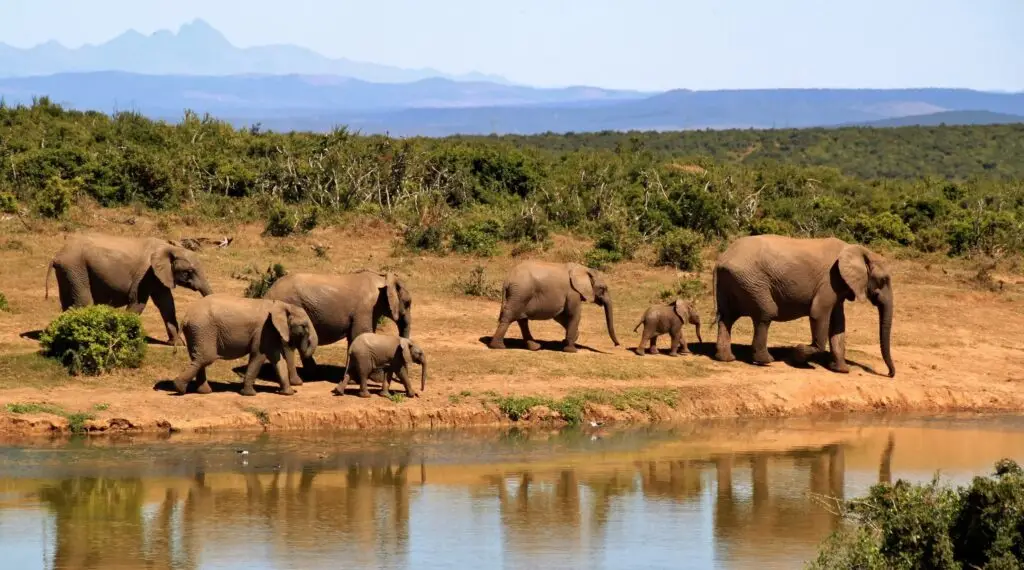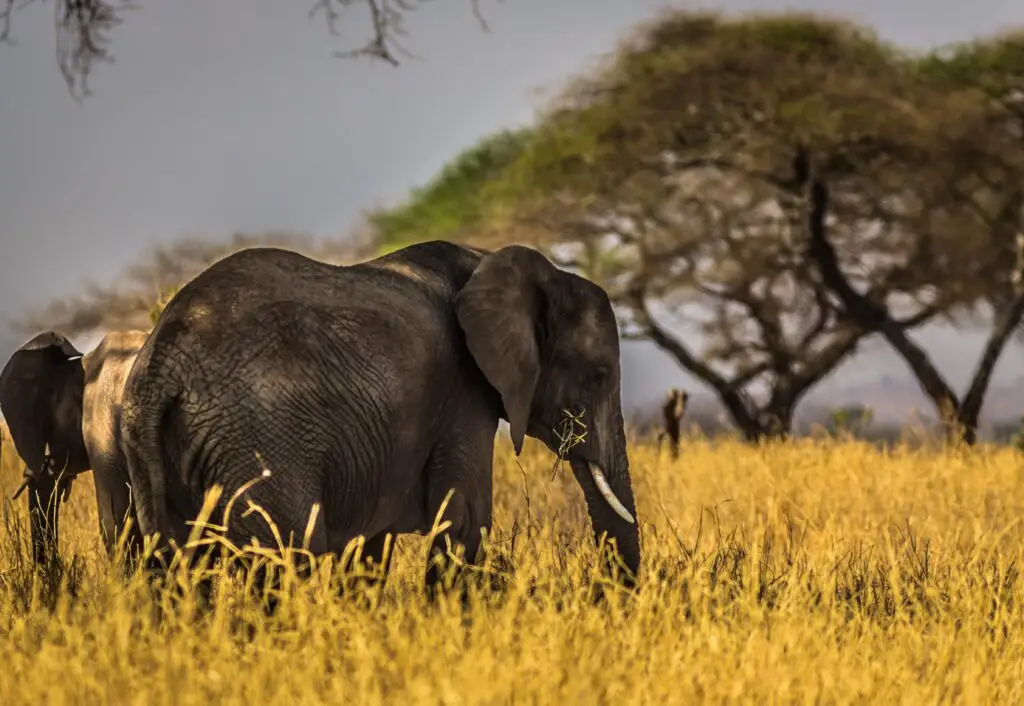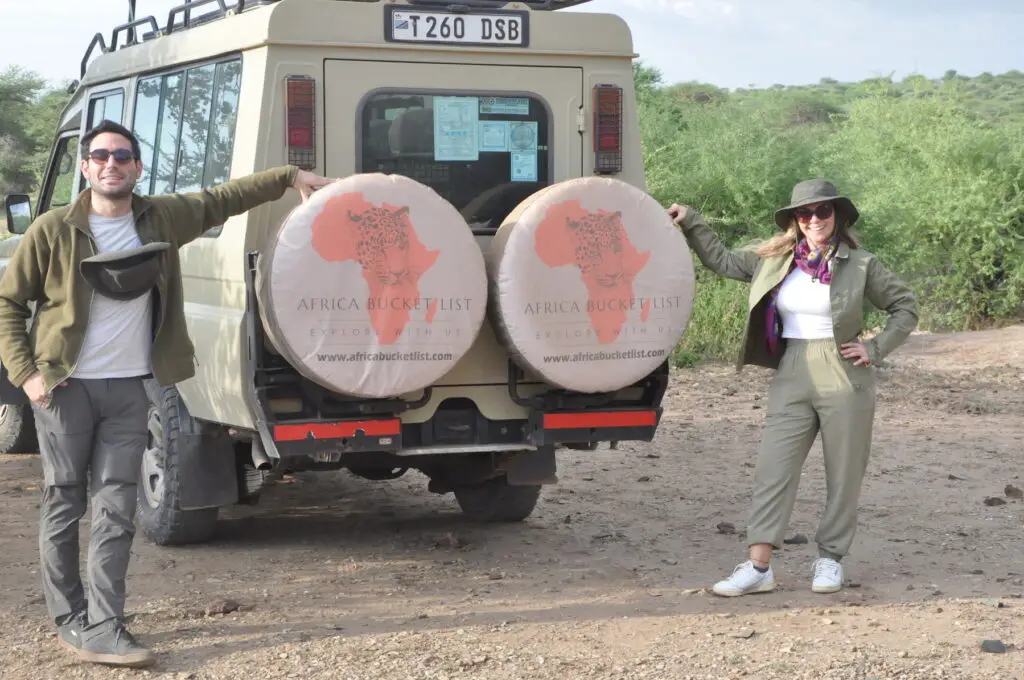If you’re dreaming of an extraordinary wildlife adventure in one of Africa’s most stunning destinations, this article is for you. We will provide you with expert tips, detailed insights, and invaluable recommendations to guide on how to plan a perfect safari in Tanzania.
Tanzania boasts a wide range of national parks and reserves, each offering distinct ecosystems and wildlife experiences. Here are some of the most renowned ones:
The Serengeti is an iconic destination for wildlife enthusiasts, known for its vast plains, abundant wildlife, and the annual Great Migration of wildebeest and zebra. Prepare to witness thrilling predator-prey interactions and marvel at the incredible biodiversity.
Home to the breathtaking Ngorongoro Crater, this area is a haven for wildlife lovers. The crater is a UNESCO World Heritage Site and boasts a high concentration of animals, including the rare black rhino. Enjoy game drives, guided walks, and cultural interactions with the Maasai people.
Renowned for its large elephant herds and ancient baobab trees, Tarangire National Park offers a unique safari experience. Explore the diverse landscapes, spot incredible bird species, and witness unforgettable sunsets over the Tarangire River.
For those seeking a more off-the-beaten-path adventure, Ruaha National Park is a hidden gem. Remote and unspoiled, it offers pristine wilderness, abundant wildlife, and a sense of exclusivity. Embark on thrilling game drives and immerse yourself in the untouched beauty of Tanzania.

When embarking on a safari adventure, it’s crucial to plan your budget wisely. Tanzania offers a wide range of safari options, catering to different budgets and preferences. Here are some key considerations to keep in mind:
Accommodation: Tanzania provides a variety of accommodation options, from luxurious lodges to cozy campsites. Determine the level of comfort and amenities you desire and allocate a suitable portion of your budget accordingly.
Transportation: The mode of transportation within the safari plays a significant role in your overall experience. Choose between a private safari vehicle, shared group tours, or even consider flying between destinations for a more seamless and time-efficient journey.
Activities: Tanzania offers a plethora of activities, such as game drives, walking safaris, and hot air balloon rides. Prioritize the activities that interest you the most and allocate a portion of your budget accordingly.
Duration: The duration of your safari will impact your expenses. Decide on the length of your trip based on the number of national parks you wish to visit and the time you want to spend exploring each location.
Remember, it’s essential to strike a balance between comfort, activities, and budget to ensure a fulfilling safari experience.
When planning a safari in Tanzania, one crucial decision to make is determining the number of days you should allocate for your adventure. While the duration of your safari depends on various factors, including your budget and personal preferences, this guide will help you make an informed choice to optimize your wildlife exploration.
When deciding the number of days for your safari, consider the following factors:
Tanzania is renowned for its diverse wildlife population, including the iconic Big Five (elephant, lion, leopard, buffalo, and rhino), wildebeest, zebras, giraffes, and countless other fascinating species. The more time you allocate, the greater your chances of encountering a wider range of wildlife in their natural habitats.
Each national park in Tanzania has its own unique features and attractions. If you have specific parks in mind that you’re eager to explore, consider dedicating more days to those destinations. This allows for deeper exploration and the opportunity to fully appreciate the distinct offerings of each park.
If witnessing the Great Wildebeest Migration is high on your priority list, it’s essential to plan your safari during the appropriate months. The migration patterns vary throughout the year, and being in the right place at the right time significantly enhances your chances of witnessing this incredible natural phenomenon.
Consider your travel pace and personal preferences. Some travelers enjoy a more leisurely experience, with ample time for relaxation and immersing themselves in the surroundings. Others prefer a faster-paced adventure, maximizing their time by visiting multiple parks in a shorter period. Tailor your safari duration to match your preferred style of exploration.
While the duration of a safari is ultimately a personal choice, here are some general recommendations based on popular itineraries:
Ideal for those with limited time or as an add-on to other travel plans, a short safari provides a taste of Tanzania’s wildlife wonders. This duration allows for a focused visit to a specific park or reserve, offering a condensed yet rewarding experience.
A classic safari duration provides a well-rounded experience, enabling you to visit multiple national parks and explore their unique offerings. With 4-7 days, you can immerse yourself in the diverse ecosystems, witness captivating wildlife encounters, and truly appreciate the enchanting landscapes.
For avid wildlife enthusiasts and those seeking a comprehensive immersion in Tanzania’s natural wonders, an extended safari of 8 days or more is highly recommended. This duration allows for in-depth exploration of multiple parks, including lesser-known gems, and provides a more profound understanding of the region’s biodiversity.
Remember, these recommended durations are flexible and can be customized to suit your preferences. Working closely with a trusted safari operator or travel planner can help you design an itinerary that aligns with your desired experiences and budget.

Timing is crucial when planning a safari in Tanzania. The country offers incredible wildlife viewing opportunities throughout the year, but certain months provide unique experiences. The dry season, from June to October, is considered the best time for game drives as animals gather around water sources, making them easier to spot. However, the wet season, from November to May, offers lush landscapes, fewer crowds, and the opportunity to witness the Great Migration. Find out more about when to visit Tanzania ?

When planning your safari, selecting the right accommodation is crucial for an unforgettable experience. Tanzania offers a wide range of options, from luxury lodges to tented camps. Consider the following factors:
Choose accommodations that are strategically located within or near the national parks and reserves you plan to visit. This will save you time on transportation and allow for more wildlife viewing opportunities.
Ensure that the accommodation you choose provides the level of comfort and amenities you desire. Some lodges offer luxurious amenities such as swimming pools, spa facilities, and gourmet dining options, while others provide a more rustic and authentic safari experience.
Support lodges and camps that prioritize sustainable practices and contribute to the conservation of Tanzania’s natural resources. Eco-friendly accommodations not only minimize their impact on the environment but also offer unique opportunities to engage with local communities and learn about conservation efforts.

When planning a safari in Tanzania, one important decision to make is whether to opt for a private or group safari experience. Both options have their advantages and considerations, and understanding the differences will help you determine which type of safari suits your preferences and enhances your wildlife adventure.
A private safari offers personalized attention, exclusivity, and flexibility. Here’s why it might be the ideal choice for you:
When planning a safari in Tanzania, one important decision to make is whether to opt for a private or group safari experience. Both options have their advantages and considerations, and understanding the differences will help you determine which type of safari suits your preferences and enhances your wildlife adventure.
Private safaris typically come with a dedicated guide and safari vehicle exclusively for your group. This allows for personalized attention, as the guide can focus on your interests, answer your questions, and tailor the safari experience to your specific needs.
One of the significant advantages of a private safari is the flexibility it provides. You can set your own pace, spend more time at sightings that captivate you, and have the freedom to explore off-the-beaten-path areas. Additionally, the exclusivity of a private safari ensures a more intimate and private experience for you and your travel companions.
A group safari involves joining a guided tour with other travelers. Consider the following benefits of a group safari:
Group safaris are often more budget-friendly than private safaris, as the costs are shared among the participants. This makes it an attractive option for travelers looking for an affordable wildlife adventure.
Joining a group safari provides the opportunity to meet and interact with fellow travelers who share a similar passion for wildlife and nature. It offers a chance to exchange experiences, stories, and insights, making the safari journey a more social and engaging experience.
Group safaris often include knowledgeable guides who provide valuable information about the wildlife, ecosystems, and local culture. The group setting allows for shared learning experiences, as the guide imparts knowledge to all participants, enriching the overall safari experience.
When deciding between a private and group safari, consider the following factors:
Reflect on your travel style, preferences, and priorities. If you value personalized attention, flexibility, and privacy, a private safari is likely the better choice. On the other hand, if you enjoy meeting new people, sharing experiences, and have a limited budget, a group safari may be more suitable.
If you’re considering a group safari, think about the dynamics of traveling with a group. Assess your comfort level with sharing accommodations, vehicles, and the overall experience with other travelers.
Evaluate your desired itinerary and specific interests. If you have specific wildlife sightings or destinations in mind that require flexibility or more time, a private safari may better accommodate your preferences. If your primary goal is to have a cost-effective and social experience, a group safari might be the way to go.

Selecting a reliable safari operator is paramount to a successful and enjoyable adventure. Here are some tips for finding the right operator:
Research: Conduct thorough research and read reviews from previous travelers to gauge the operator’s reputation and quality of service.
Certifications and Memberships: Look for safari operators affiliated with reputable industry organizations, such as the African Travel and Tourism Association (ATTA) or the Safari Professionals of East Africa (SPEA).
Tailored Itineraries: Ensure that the safari operator offers customizable itineraries that cater to your preferences, allowing you to create a personalized experience.
Expert Guides: Experienced and knowledgeable guides can enhance your safari experience by providing valuable insights and ensuring your safety throughout the journey. Inquire about the qualifications and expertise of the guides accompanying your safari.
Safari packing list Tanzania is the most essential topic to keep in mind before starting your Tanzania safari Tours as you simply do not want to miss any essential item on your Safari. Apart from looking stylish, you want you Safari outfit to work for you in other ways, namely protecting you from the elements and insects. We discuss what to wear, as well as reveal the surprising reason why blue is no-go on Safari.
When planning your Safari packing list and especially when thinking about what to wear on Safari, there are a few things that that you need to be keeping in mind. My general tip, which is actually valid for all trips anywhere in the world, is to pick versatile items that can be easily mixed and matched together in terms of colors and fabrics, in order to create a good number of outfits with just a handful of items and which with the right accessories, can be used either as casual wear or become more-dressy.
📞 +33 7 73 38 77 94
Notre formulaire de contact
Des reportages inspirants, des astuces, des conseils et des offres promotionnelles exclusives sur la Tanzanie vous attendent ! Inscrivez-vous à notre newsletter et répondez à l’appel de la savane avant tout le monde.
Hi there 👋! Mino is here to help you plan your trip in Tanzania. We speak english and french !
Ut enim ad minim veniam, quis nostrud exercitation ullamco laboris nisi ut aliquip ex ea commodo consequat. Duis aute irure dolor in reprehenderit in
We are dedicated to help you complete your bucket list in Tanzania. Explore the wildlife and climb Kilimanjaro with us.
POV BOX 96 Marangu, Kilimanjaro, Tanzania